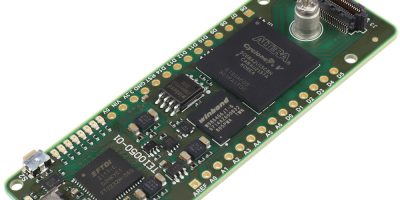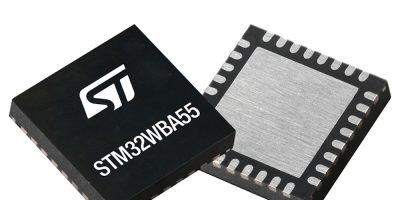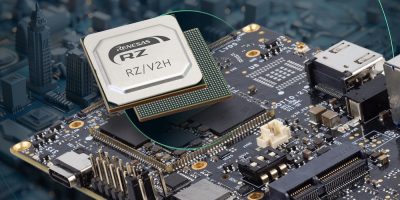ST has revealed the next generation of its short-range wireless microcontrollers. These all-in-one components enable wearables and smart objects including smart home devices, health monitors, and smart appliances to become ever more miniaturised, easy to use, secure and affordable.
Short-range wireless technologies like Bluetooth LE, Zigbee and Thread (popular in smart meters and smart buildings) are the fabric connecting smart devices to home bridges, gateways, and controllers including smartphones. As we all seek solutions for making life more economical, sustainable, and comfortable, vendors are looking to bring creative and high-performing new solutions to market more quickly, within tight cost constraints. They need to be stylish, too: tiny, low-profile, or even embedded out of sight in other equipment, such as in smart bulbs. Going wireless is a part of this trend, for freedom, flexibility, and fashion.
Wireless microcontrollers like ST’s new STM32WBA5 product line allow a one-chip solution that’s extremely compact, reduces the bill of materials, and shortens the time to market by relieving wireless design challenges. Also, being compatible with the development tools and software packs of the STM32 microcontroller development ecosystem, the new line simplifies migrating existing products designed for wired connections.
The new series’ flagship STM32WBA55 microcontroller can communicate using multiple wireless standards concurrently, including low-energy Bluetooth LE 5.4, Zigbee, Thread, and Matter (Thread RCP). Matter border router is a perfect match with the STM32WBA5 for this new open-source connectivity standard for smart-home and IoT (Internet of Things) devices. In this way, the STM32WBA55 supports a great user experience while simplifying hardware and software engineers’ development journey, aiding affordability and time to market for the new product.
With this new generation, ST has also introduced support for the recently completed Bluetooth LE Audio specifications that enable exciting and innovative new products for richer listening and hearing experiences. These include the new Bluetooth Auracast feature, which opens the door to a new world of audio broadcasting applications.
The STM32WBA series is the first wireless MCU in the market to achieve the important SESIP (Security Evaluation Standard for IoT Platforms) Level 3 security certification. With this, smart devices containing STM32WBA microcontrollers are ready to satisfy the US Cyber Trust Mark and EU Radio Equipment Directive (RED) regulations due to become mandatory in 2025.
The new STM32WBA5 product line will be available on st.com on March 12. Sample requests and pricing information are available from local ST sales offices. ST will introduce a ready-to-use module containing the STM32WBA, integrated with necessary external components including power-supply and antenna-balancing circuitry, in June 2024.
https://www.st.com/stm32wba







